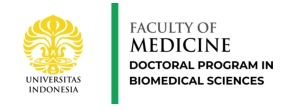Metabolic Syndrome (MetS) is a cluster of metabolic disorders that are closely associated with an increased risk of atherosclerotic cardiovascular disease and type 2 diabetes mellitus (DMT2). The MetS criteria set by the American Heart Association/ National Heart, Lung, and Blood Institute (AHA/NHLBI), are waist circumference ≥ 102 cm in men, ≥ 88 cm in women, blood pressure ≥ 130/ ≥ 85 mmHg or currently on antihypertensive medication, plasma triglyceride level ≥ 150 mg/dL, HDL cholesterol <; 40 mg/dL in men, < 50 mg/dL in women, fasting glucose ≥ 100 mg/dL or have a history of diabetes or are taking diabetes medications. MetS prevalence globally is increasing, including in Indonesia by 23%. One of the important mechanism pathways that play a role in MetS progression is endoplasmic reticulum stress (ER stress), a condition where there is an accumulation of unfolded or misfolded protein in the lumen of the endoplasmic reticulum (RE). This condition will activate the unfolded protein response (UPR) signaling pathway with the main target being the liver, adipose tissue, intestine, and skeletal muscle. The role of the UPR is to relieve stress, maintain RE homeostasis, and increase cell adaptability and endurance. If the cell is able to deal with ER stresswhich can be overcome by the UPR, then the cell will survive. Conversely, if cells are unable to cope with ER stress, cell dysfunction and death will occur, which are thought to play a major role in the pathogenesis of metabolic disorders such as T2DM, dyslipidemia and obesity.
Until now there is no single drug to treat MetS. Pharmacotherapy is usually given for the long term and is multiple, related to MetS comorbid factors, giving rise to the possibility of polypharmacy and affecting patient compliance. This encourages the interest of researchers to start trying the use of natural ingredients to improve outcomeand compliance in overcoming MetS, one of which is ginger, which has many biological activities, such as antioxidant activity, anti- inflammation, antiobesity, antidiabetic, antimicrobial, anticancer, neuroprotection, cardiovascular protection, and protection against respiratory disorders. This study aims to analyze the modulating effect of one of the active compounds contained in ginger (Zingiber officinale Roscoe), namely 6-gingerol on MetS, via the ER stress pathway. .
This research is an in vivo laboratory experimental pre-clinical study using an experimental animal model of male Sprague-Dawley rats. Mice were divided into 5 groups consisting of 5 rats per group. The first group were rats given a standard diet, the second group were rats given a high fat, high fructose (HFHF) diet, the third, fourth, fifth group were rats given a HFHF diet plus 6-gingerol dose of 50 mg/kg, 100 mg/kg and 200 mg/kg. 6-gingerol was administered for 8 weeks.
The results of this study have shown that 6-gingerol at a dose of 100-200 mg/kg has the ability to modulate the ER stress pathway in a mouse model of metabolic syndrome (MetS). 6- Gingerol was successful in reducing body weight, lowering fasting blood glucose and improving insulin resistance, lowering total cholesterol, LDL and triglycerides, lowering AST, ALT and ALP levels, increasing the ratio of adiponectin/leptin (ratio A/ L), lowering IL-6 and TNF-a, lowering fecal calprotectin levels, improving dysbiosis by decreasing the Firmicutes/Bacteroidota ratio and increasing butyrate-producing bacteria, reducing adipose tissue hypertrophy, and reducing inflammation progression, lipid accumulation and apoptosis in liver cells. The improvement of these metabolic abnormalities proves the role of 6-gingerol in the ER stress pathway through the down regulation of GRP78, IRE1, TRAF2, and JNK protein expression.

